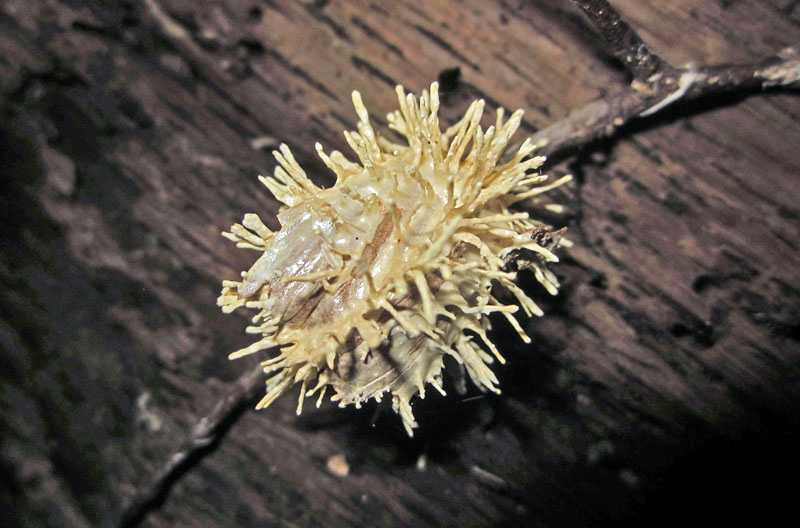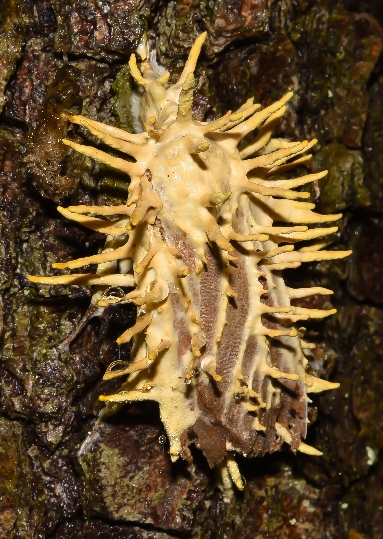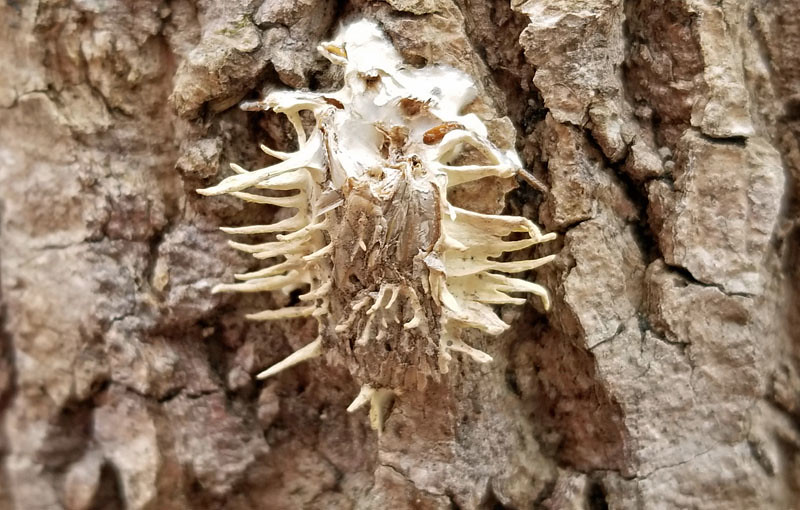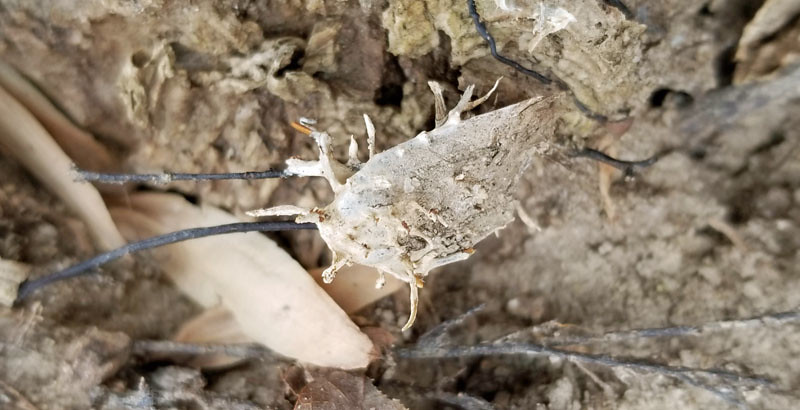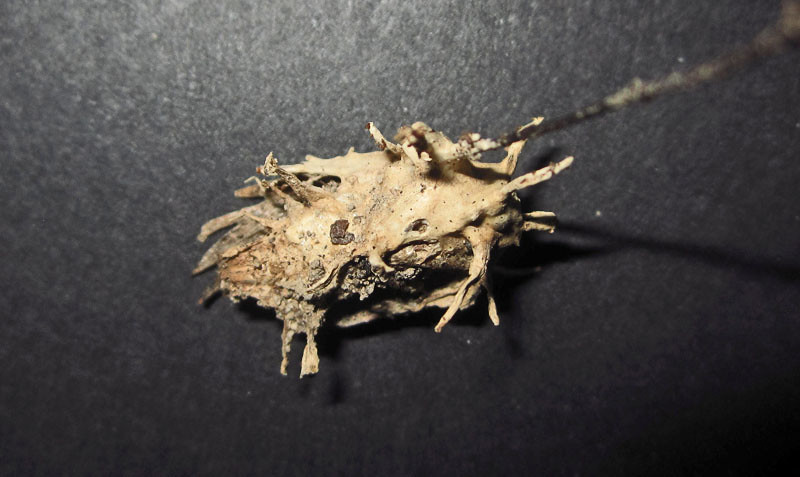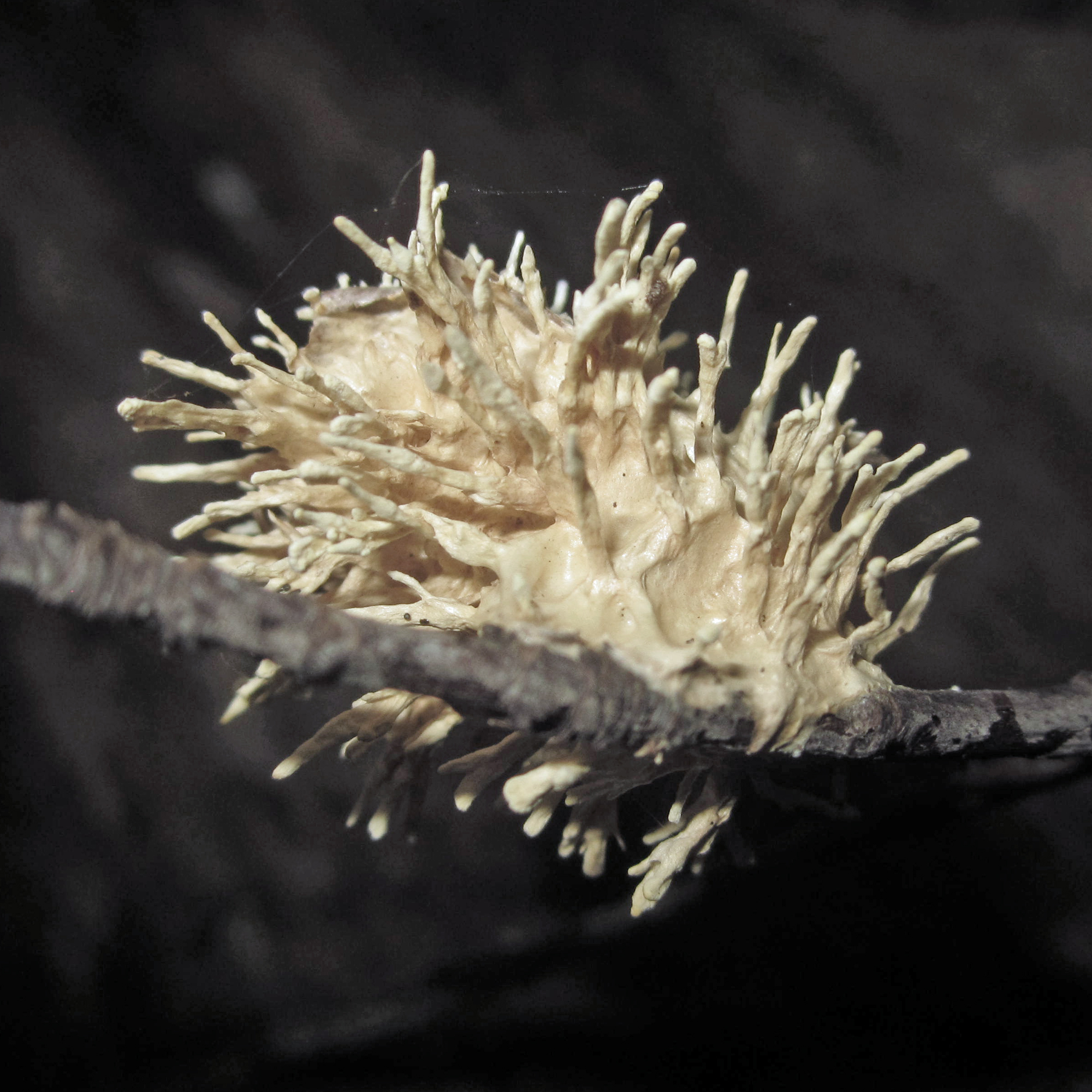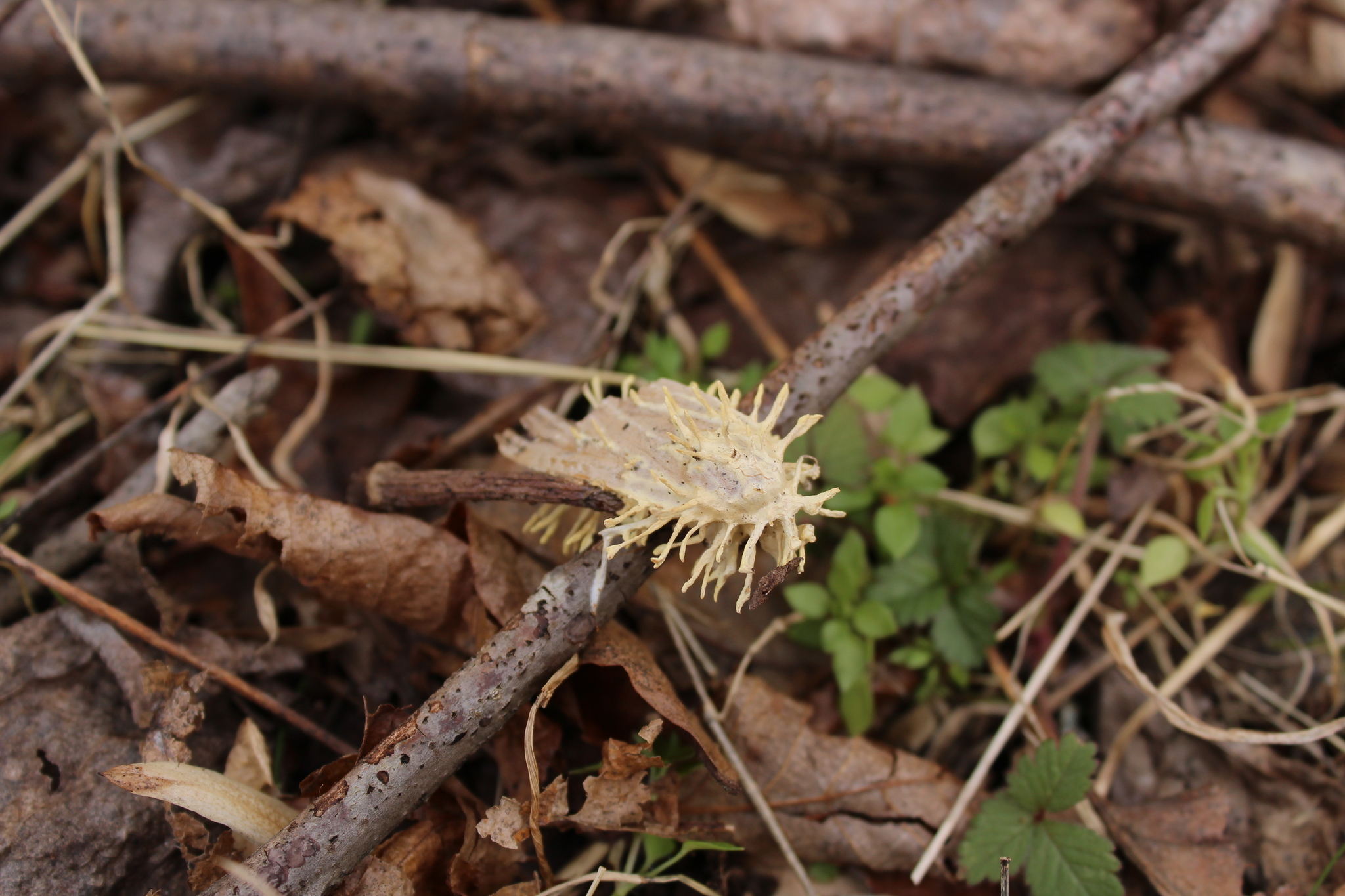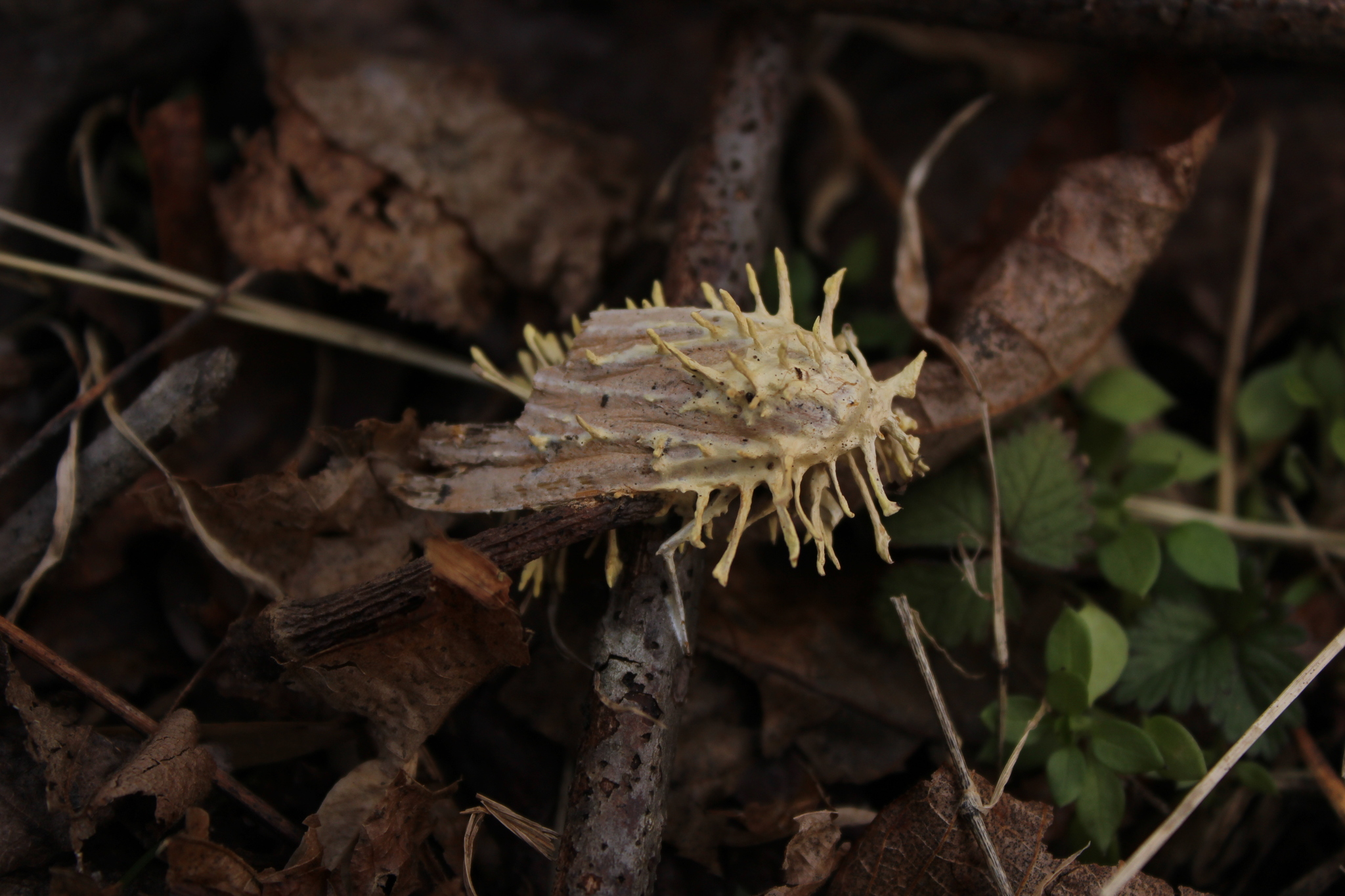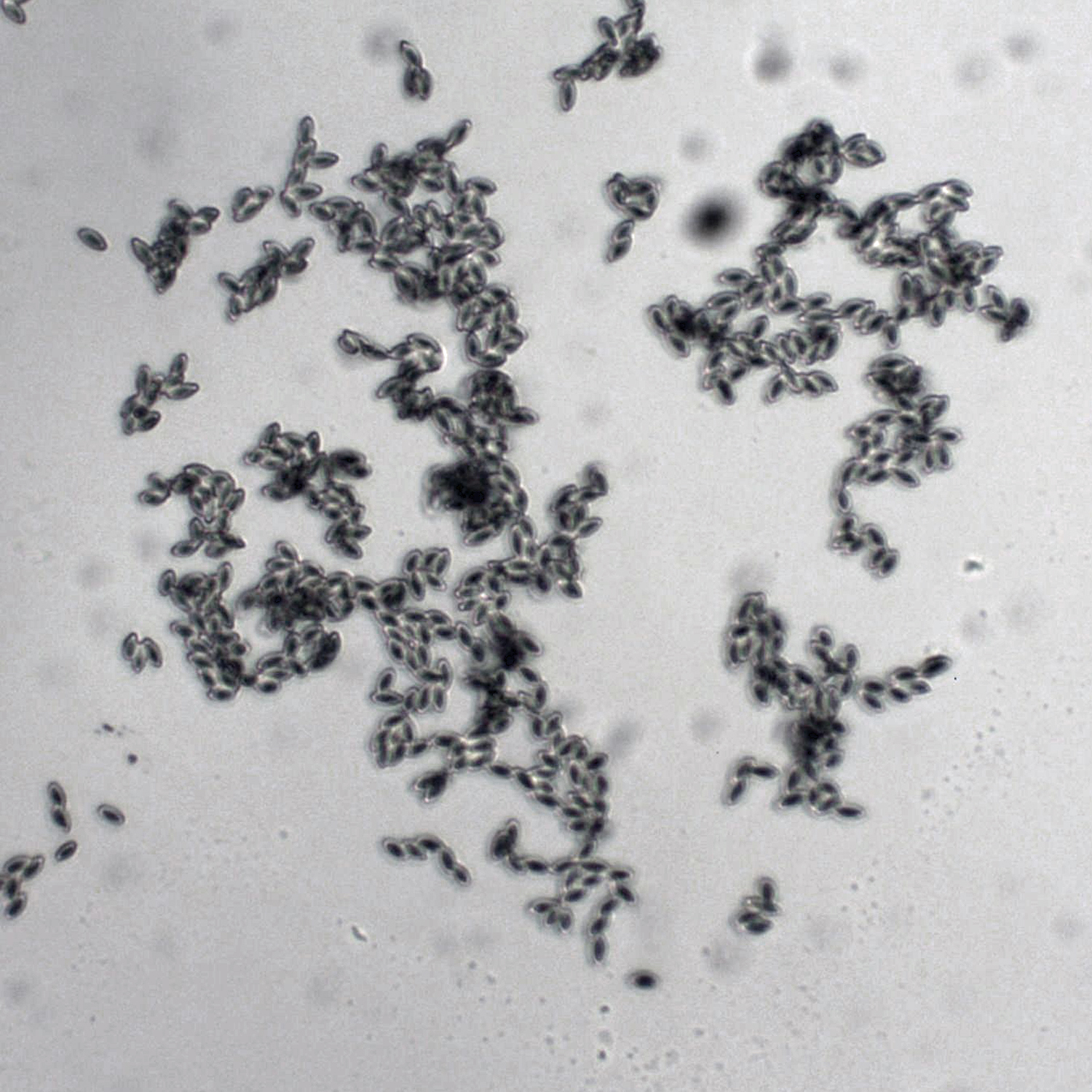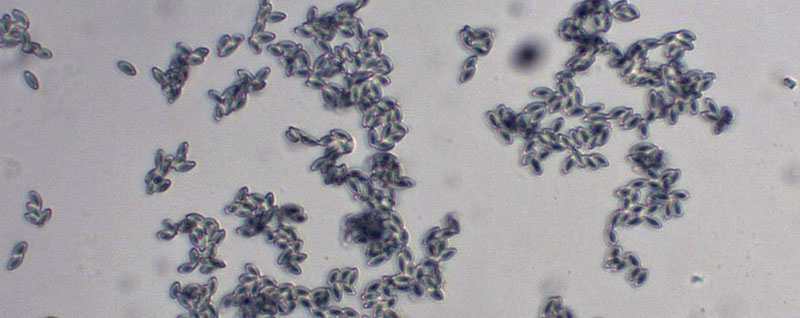





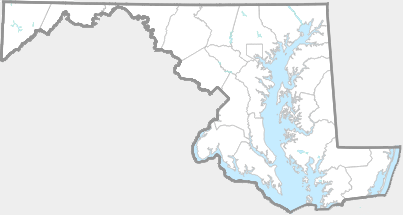
"Parasitizing and emerging from the bodies of moths with multiple rod-like structures arising from a single moth" (Elliott & Stephenson). The anamorph (asexual) stage of this fungus is marked by rod-like structures arising from a white mycelium on the host. The rods are covered by conidia (asexual spores). The infected moth is attached firmly to a branch or other substrate by mycelium. (J. Solem, pers. comm.)
Because certain stages of Cordyceps tuberculata and C. sphingum (and perhaps others) can be confused with Akanthomyces aculeatus, microscopic examination is necessary to establish certain identity (Ascomycetes of North America, M. Beug, A. E. Bessette, A. R. Bessette, 279-80).
There are 13 records in the project database.
| GA | AL | WA | FR | CL | MO | HO | BA | BC | HA | CE | PG | AA | CV | CH | SM | KE | QA | CN | TA | DO | WI | SO | WO |
